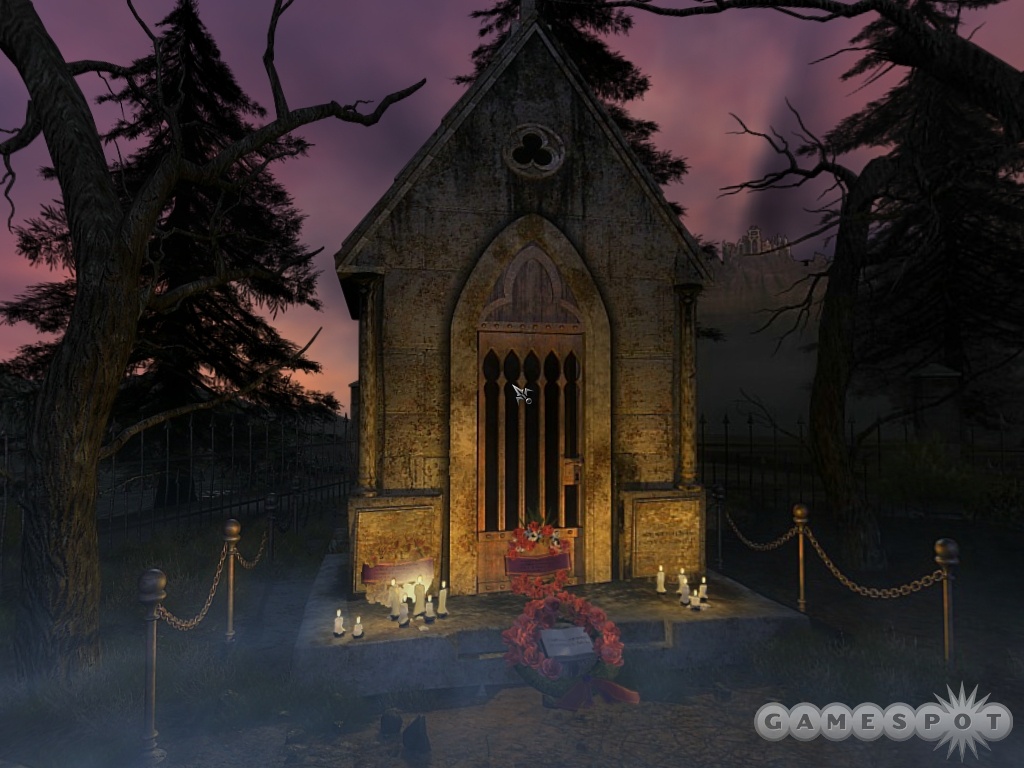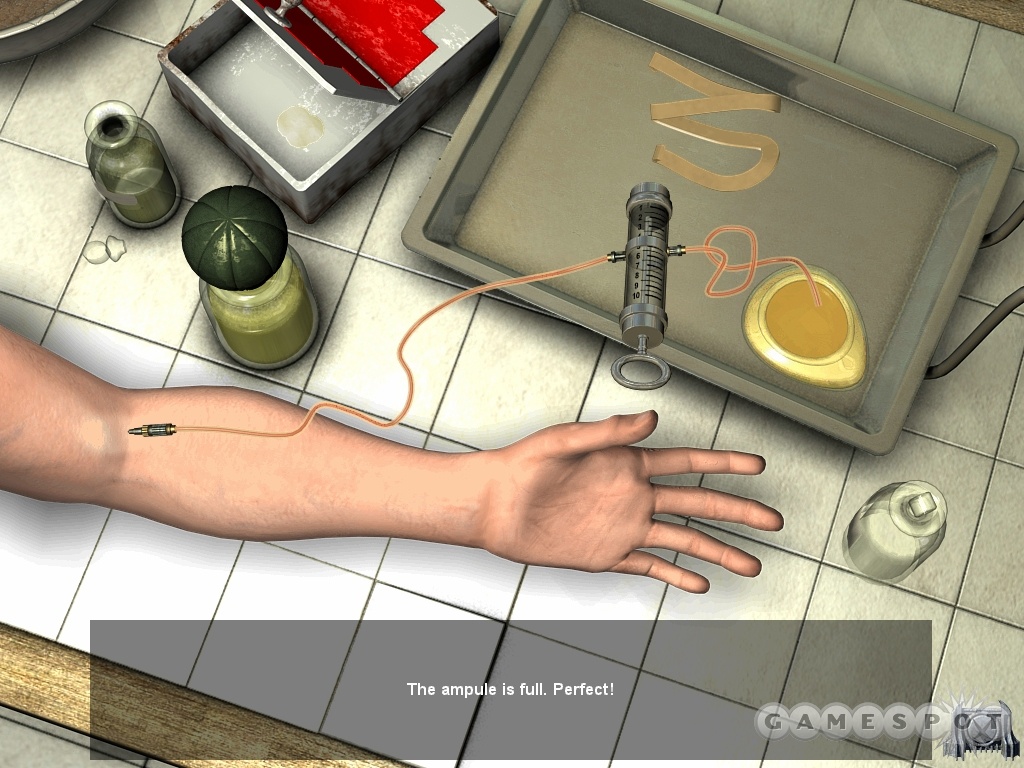Dracula again? Vampire fatigue is a legitimate feeling that you might encounter when ripping open the shrink-wrap of Dracula 3: The Path of the Dragon, given that it seems like Bram Stoker's infamous creature of the night has already been the focus of a lot of adventure games. This latest one, the third in a franchise that started nearly a decade ago with Dracula: Resurrection and Dracula: The Last Sanctuary, doesn't bring much new to the table. Developer Kheops Studio sticks to the ancient adventure-gaming formula that it has specialized in with previous releases such as Return to Mysterious Island and Voyage, and spins a dull yarn in which you research the biggest bloodsucker of them all in 1920s Transylvania. Busywork puzzles and stone-age visuals further drain the rest of the creeps out of this supposedly scary saga, which unfolds more like an uninspired detective story than an ominous encounter with a legendary monster.

The plot isn't what you would expect from a Dracula-inspired game, although you can't characterize that as a good thing. For a change, you don't play Van Helsing or any of his descendants. Instead, you take the role of Father Arno Moriani, a priest sent to Transylvania by his bosses at the Vatican to investigate a recently deceased Romanian doctor who has been declared a candidate for canonization. The good father soon finds out that the doctor held some odd views regarding a number of strange deaths in the village, and he finds his assignment quickly changed from sainthood vetting to disproving the existence of vampires. So you spend most of your time undertaking scientific research and questioning professors, not tracking down Dracula and his pointy-toothed pals. More time is spent with test tubes than with stakes, and you don't actually encounter any vampires until the very end of the game.
Another novelty involves moving the setting from the stereotypical Victorian age to the 1920s, when Romania was still reeling from the devastation caused by World War I. This doesn't make for many differences when it comes to gameplay, although shifting the game into the 20th century does allow for more-varied artwork involving semimodern touches such as telephones, trains, electric lights, and chemistry equipment. However, the overall visual quality is fairly poor, despite good use of shadows and fog effects to create a spooky mood. Most scenes are grainy, and character models are afflicted with slow-motion movement tics that makes it seem like everybody you meet is underwater. Voice samples often sound vaguely slurred in a rather similar fashion, lending a surreal vibe to many conversations that actually enhances the eerie nature of your investigations.
Gameplay offers some similarly unwelcome surprises, at least after you get past all of the "Brand X" stuff. Dracula 3 is dry, traditional, and stilted. Nevertheless, there is one big changeup here in regard to puzzles. The designers chose to move away from cliched vampire plot devices and play up a more modern "It's the 20th century--there are no such things as vampires!" vibe that apparently seeks to explain bloodsucker fear as mere peasant legend. This is a nice switcheroo from the standard stake-the-fanged-guy credulity that usually accompanies any game about Dracula. But it's also pretty disingenuous in that you know from the very beginning that Father Arno won't be discovering that vampires are just make-believe after all. That would have been a cool surprise after all of the buildup about Vlad Tepes, neck hematomas, and weird blood disorders, but it's hard to pull back from supernatural explanations when you've got Dracula rising from his coffin on the cover of the game. So the story eventually goes right where you see it heading from the beginning, despite the lame attempts to fake you out.

Such an approach to the story also, ahem, bleeds a lot of the gothic-horror atmosphere out of the game's gloomy rooms and foggy street scenes. Puzzles seem more often based on science than superstition. At times, it feels like you're more of a Sherlock Holmes than a priest, with only the ability to flip open a Bible to read inspirational quotes reminding you that this protagonist wears a collar and a crucifix around his neck. You even walk step by boring step through scientific experiments at a couple of points; for example, you're forced to wade through the amazingly tedious process required to draw your own blood and then do tests for type and other issues with multiple blood samples. It's all a bit much, especially when the procedures are so true to life that you actually have to wash your hands a few times. Other types of set-piece logic puzzles are more appropriate to a horror setting in that they involve broken artifacts, ancient tomes, drawing pentagrams, and so forth. Yet even these brainteasers are cumbersome and time-consuming. Considering that these puzzles generally aren't difficult to figure out, you're not solving mysteries as much as you are tediously filling in the blanks until the game lets you proceed.
Adventure gamers with a taste for methodical puzzle-solving could appreciate Dracula 3: The Path of the Dragon, whereas everybody else will be too busy stifling yawns to feel any chills running down their spines. This is a vampire-inspired adventure by the numbers that holds few surprises in its dry puzzles and dated presentation values.



